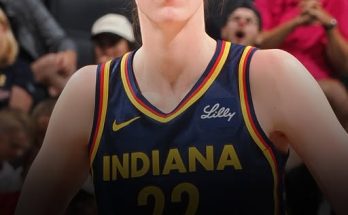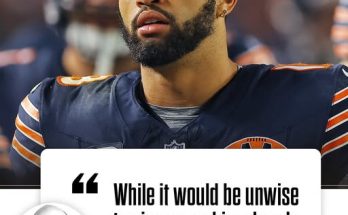The Baltimore Ravens add cap space and modify Michael Pierce’s retirement.
The Baltimore Ravens have always been known for their strategic approach to roster management, ensuring long-term competitiveness while working within the constraints of the NFL’s salary cap. The 2025 offseason has been no different, with the team making calculated moves to free up cap space, restructure contracts, and adjust to unexpected player retirements. One of the biggest developments this offseason has been the retirement of nose tackle Michael Pierce and how the Ravens managed to modify its financial implications. Additionally, restructuring deals with key players like Marlon Humphrey has allowed the team to maximize cap flexibility ahead of the next NFL season.
This article provides an in-depth analysis of how the Ravens have navigated these financial challenges, what these moves mean for the team’s roster, and how they will impact future contract negotiations and draft strategy.
Marlon Humphrey’s Contract Restructuring: A Strategic Cap Space Move
One of the most impactful financial decisions the Ravens made this offseason was restructuring Marlon Humphrey’s contract. The Pro Bowl cornerback is a cornerstone of Baltimore’s defense, and ensuring he remains a part of the team without creating financial strain was a priority. By converting a significant portion of his $18 million salary and roster bonus into a signing bonus, the Ravens freed up approximately $13.396 million in cap space.
The restructuring involved adding two void years to Humphrey’s deal, a technique often used by teams to spread cap hits over a longer period, thus reducing immediate financial burdens. While this strategy creates dead cap space in future years, it allows the team to retain talent and pursue other necessary roster moves in the short term. The extra cap space has positioned the Ravens to be more aggressive in free agency, retain key pending free agents, or even make mid-season acquisitions.
Why This Move Matters:
- Creates immediate flexibility for additional signings
- Retains a defensive cornerstone without an outright pay cut
- Adds potential cap constraints in future years but aligns with the team’s competitive window
By employing this financial strategy, Baltimore follows a pattern of strategic cap management, ensuring that they remain competitive while not severely handicapping their future flexibility.
Michael Pierce’s Retirement: A Loss with Financial Implications
Michael Pierce, the dominant nose tackle who has been a force on the Ravens’ defensive line, announced his retirement on March 12, 2025. After nine seasons in the NFL, including two stints with Baltimore, Pierce decided to step away from the game, citing health concerns and a desire to focus on life after football.
Throughout his career, Pierce was known for his exceptional ability to clog running lanes and apply interior pressure. He finished his career with 238 tackles, 9.5 sacks, and one interception across 99 games. His presence in the middle of the defensive line will be missed, both from a performance and leadership standpoint.
Financial Impact of Pierce’s Retirement
Initially, Pierce’s retirement left the Ravens with a $2 million dead cap hit for the 2025 season. However, the team worked with Pierce to adjust the timing of his retirement to process it as a post-June 1 transaction. This minor adjustment created an additional $745,000 in cap space immediately and another $1.255 million after June 1, 2025. These funds can now be allocated toward signing additional players or covering unexpected expenses that may arise during the season.
Key Takeaways:
- The Ravens will save a total of $2 million by processing his retirement post-June 1.
- This provides additional financial flexibility for roster moves later in the season.
- Baltimore will need to find a replacement for Pierce’s role in the defensive interior, either through free agency or the draft.
While losing Pierce is a blow to the defensive line, Baltimore’s ability to mitigate its financial impact reflects its savvy cap management.
Additional Salary Cap Moves: Releasing Arthur Maulet
In addition to restructuring contracts and adjusting for retirements, the Ravens also made the difficult decision to release veteran cornerback Arthur Maulet. This move was primarily financially motivated, as Maulet’s contract carried a cap hit that was no longer sustainable given the team’s other financial obligations.
By cutting ties with Maulet, the Ravens freed up additional cap space, providing them with more options as they look to bolster their secondary. While Maulet was a solid contributor in the slot, Baltimore is confident in its younger cornerbacks stepping up and filling his role.
How These Moves Affect the Ravens’ Salary Cap Outlook
As of March 25, 2025, the Ravens now have approximately $11.2 million in available salary cap space. This figure is the result of multiple financial decisions, including:
- The restructuring of Marlon Humphrey’s contract
- Adjustments following Michael Pierce’s retirement
- The release of Arthur Maulet
This additional financial flexibility allows the team to address remaining needs, explore last-minute free-agent signings, and prepare for potential injuries throughout the season. Given the unpredictable nature of an NFL season, having available cap space is a crucial asset.
Compensatory Draft Picks: A Long-Term Strategy
One of the defining aspects of Baltimore’s roster-building strategy is its reliance on compensatory draft picks. The Ravens are widely recognized for their mastery of the NFL’s compensatory pick formula, having received 60 compensatory selections since the system was implemented.
For the 2026 NFL Draft, Baltimore is projected to receive three compensatory picks due to the departures of key free agents like cornerback Brandon Stephens and offensive lineman Patrick Mekari. These picks are likely to be in the fifth and seventh rounds, which may seem minor but have historically played a significant role in the Ravens’ ability to sustain roster depth.
Why This Matters:
- Additional draft picks allow Baltimore to develop young talent without spending heavily in free agency.
- It helps the team maintain financial flexibility by relying on cost-controlled rookie contracts.
- The compensatory pick system has been a cornerstone of Baltimore’s long-term success, allowing them to replenish talent regularly.
Baltimore’s Blueprint for Sustained Success
The Baltimore Ravens continue to demonstrate a masterclass in salary cap management. Through strategic contract restructurings, careful adjustments to player retirements, and a disciplined approach to free agency, the team ensures it remains competitive while maintaining financial flexibility.
Michael Pierce’s retirement, while significant from a roster standpoint, was handled in a way that minimized its financial burden. Meanwhile, the restructuring of Marlon Humphrey’s contract provides immediate cap relief while keeping a key defensive piece in place. The release of Arthur Maulet, though a tough decision, was necessary to create additional flexibility.
Looking ahead, Baltimore’s projected compensatory draft picks reinforce the team’s long-term roster-building philosophy. With the cap space they have created, the Ravens are now in a position to make final roster adjustments and prepare for what they hope will be a championship-contending season.
As the team continues to navigate the offseason, these financial decisions will prove crucial in shaping the 2025 roster. Ravens fans can take comfort in knowing that their front office remains one of the most adept in the NFL at handling the ever-changing salary cap landscape.



